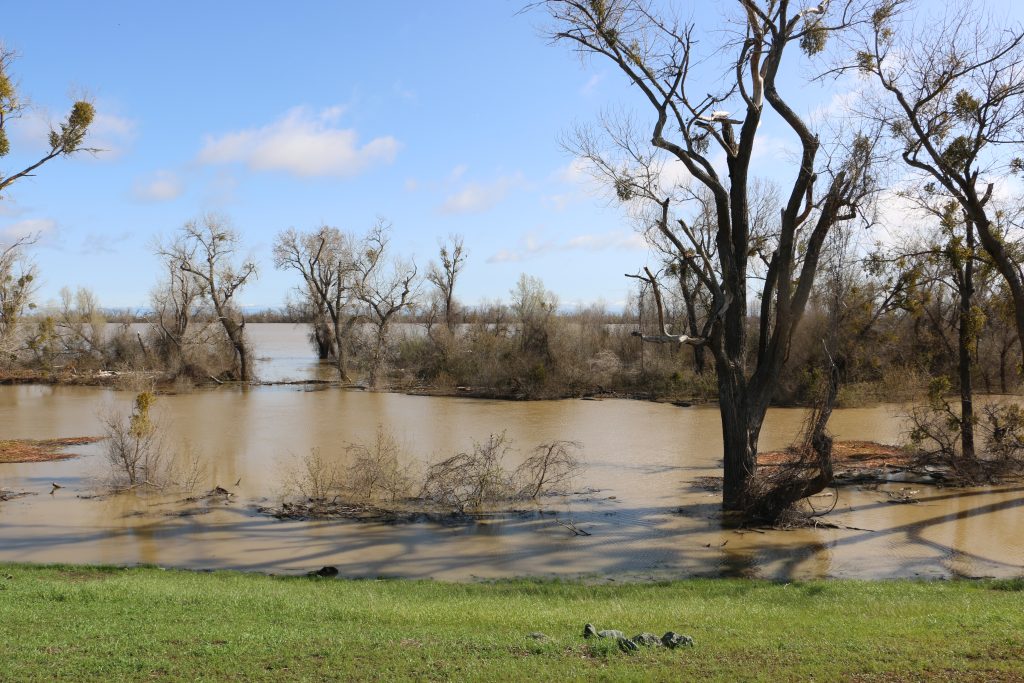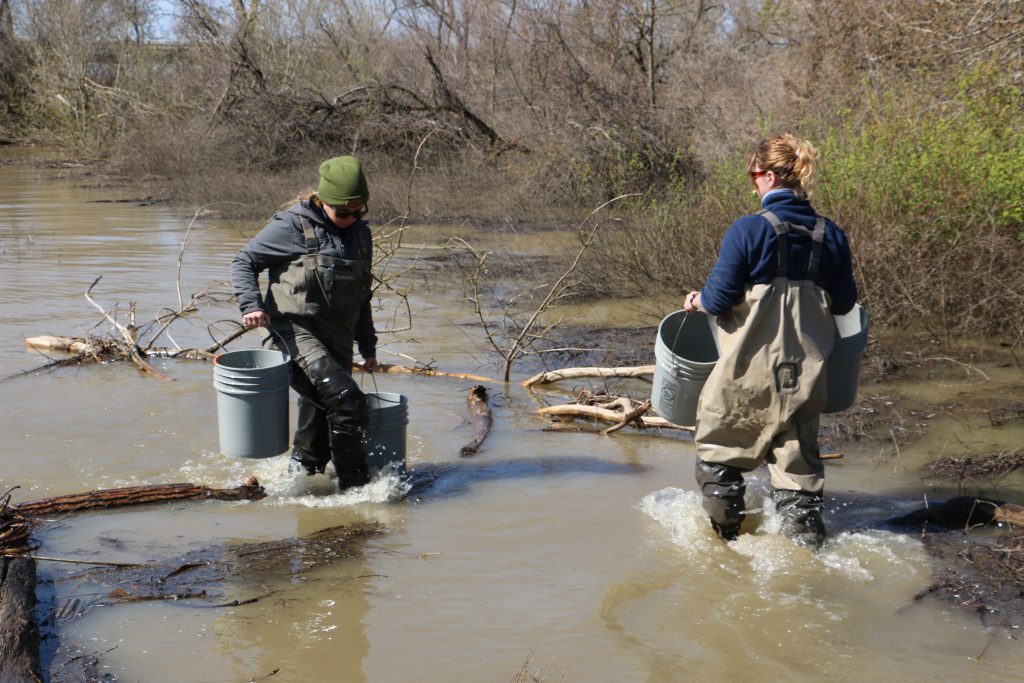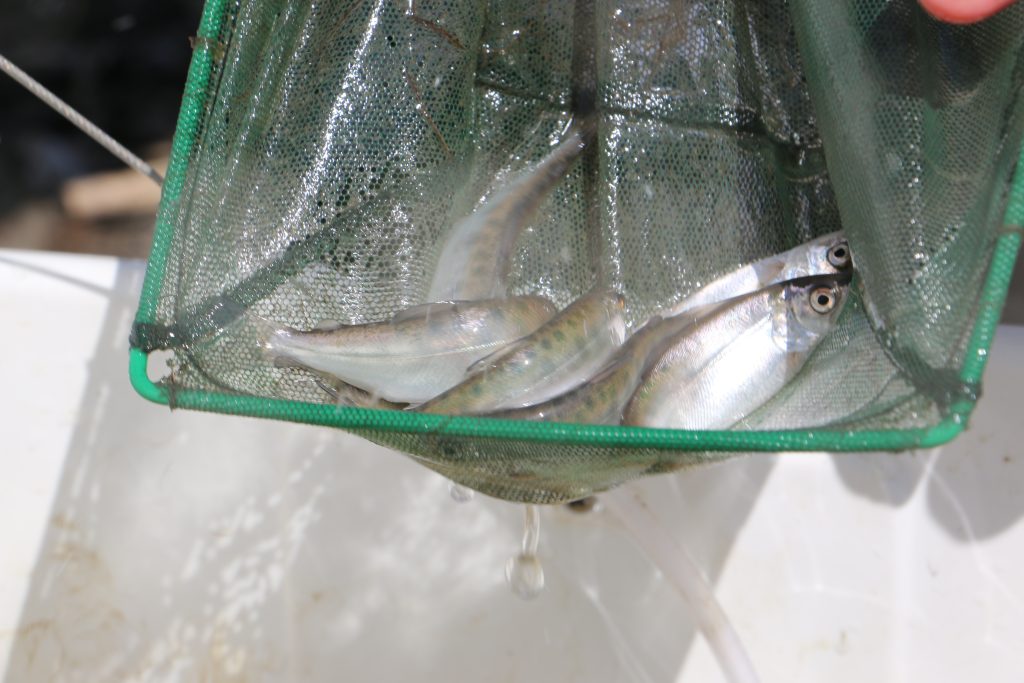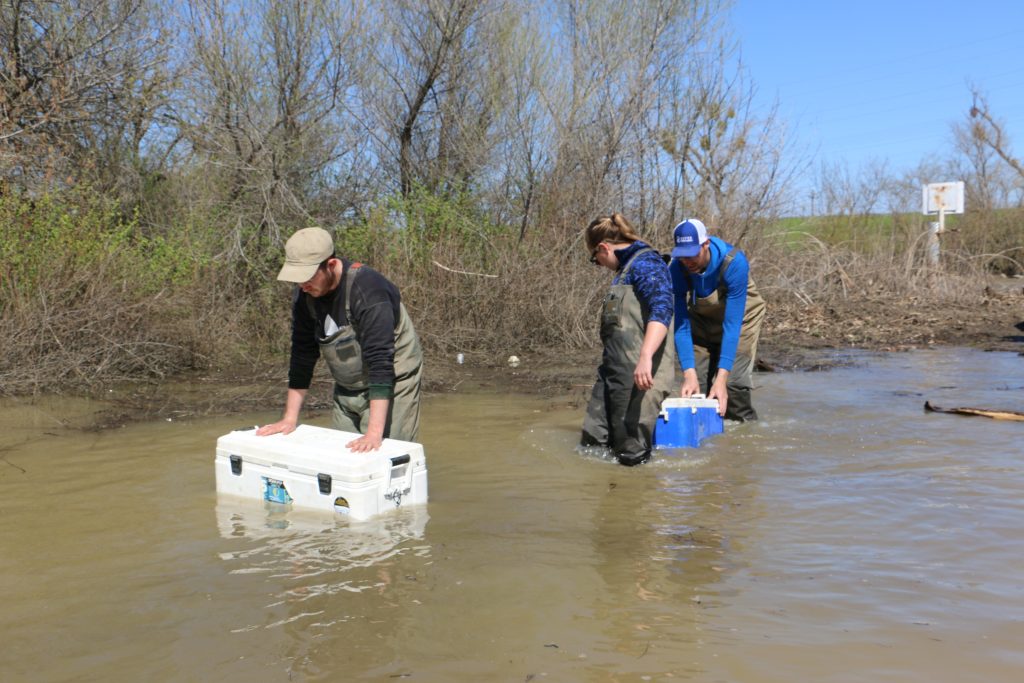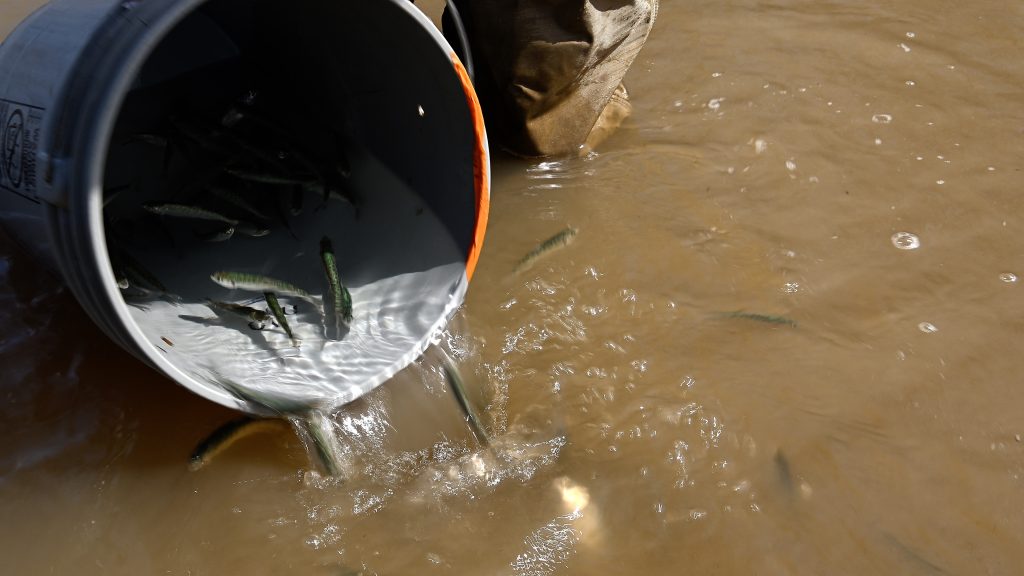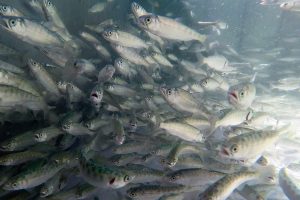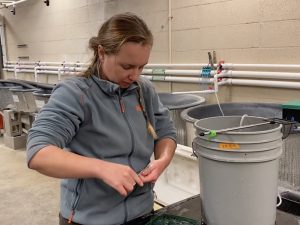Last week of Intensive Field Season Updates
This week represented “Finals Week” for the UC Davis crew that has worked tirelessly throughout this crazy, but productive, field season. They have managed through not just one but two separate bypass flooding events and they were still going strong as they managed through this final week comprised of mostly fish releases.
Updated Catch Numbers
The last date of fish capture was March 11 as we lost control of the field to the increasing Sutter Bypass flows that afternoon. This left about half of the area of the field still flooded and with an unknown number of uncounted natural-origin fish. There was a tremendous number of fish recovered in those last few days; so much so that work to complete the final catch database is still ongoing as of the date of this update. However, the list currently shows 933 fish having been captured in seins or the fyke net. Of these, 775 were identified as Chinook Salmon. The UC Davis team recorded 369 of these as part of the group of the lab-reared, PIT-tagged salmon leaving 406 as fish identified as natural-origin salmon. Work is still being done to designate all these fish as to their runs based upon the daily size class chart. Overall, 79 fall‑, 1 late-fall‑, 299 spring‑, and 24 winter run-sized fish were identified by length at date. All data are preliminary as they still need to undergo quality assurance and quality control procedures.
In the previous week’s report, we referenced that we began to see very few natural-origin salmon that were small enough to be designated as fall-run even though we suspect that most are fall-run based on the large percent of fall-run salmon ending up in the fyke during the bulk of the field season. This trend continued all throughout the final catch days during field drainage. Therefore, once the genetic test results come back later this year, we expect it will show that we collected a lot of very large fall-run from the field which would be a great indicator of the quality of food availability and rearing conditions in the rice field. More on this later this year….
Field Activity Updates
This week was mostly all about fish releases. On March 15, the UC Davis Team performed a “practice release” of our un-tagged salmon from the dryside field. You may recall that we held a duplicate number of caged fish on a dryside field as a contingency in the event bypass conditions had negatively affected our caged fish on the wetside which did not ultimately happen.
On March 17, both groups of our JSATS (Juvenile Salmon Acoustic Telemetry System) telemetry fish were successfully released into the watershed. This was a total of 462 fish; half lab-reared and half rice field-reared. The release of both groups was evenly split between a bypass release at the project field location (currently under several feet of bypass flow) and the Sacramento River. The river release location was picked so that it would be equidistant from the San Francisco Bay as the distance for the release site in the bypass.
Tracking our JSATS-tagged Salmon
For those who may like to join in the fun (or maybe even “obsession” for some), our late-fall run yearlings can be tracked by going to this webpage and our juvenile fall-run fish can be tracked at this webpage.
Monitoring of many JSATS-tagged Salmon
One last continuing field effort is what we are calling our JSATS monitoring array. As a bonus feature of our project, the UC Davis Team has placed two “curtains” of JSATS receivers into the Sutter Bypass. One is near our project site and the other is quite a distance downstream in the Sutter Bypass before it feeds into the Sacramento River. This area covers a lot of rice ground and we are hopeful to read both our JSATS-tagged fish, as well as those from other projects, to collect even more valuable information about how salmon are using these rice habitat areas. More on that down the road…
This is the final regular update to be sent out as part of the 2022–23 intensive fieldwork activities. It’s been a pleasure keeping you informed during this exciting field season. Hope you’ve enjoyed the show.
